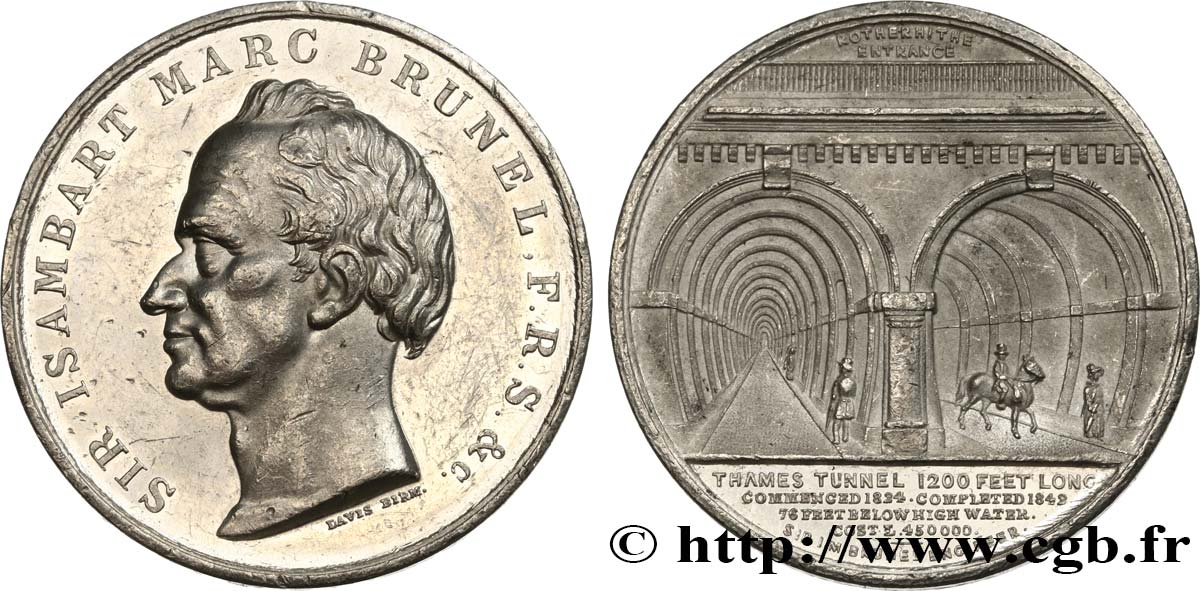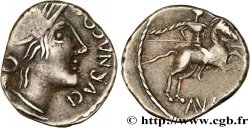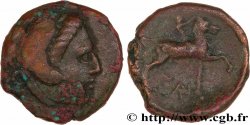E-auction 583-538533 - fme_511293 - GREAT-BRITAIN - VICTORIA Médaille, tunnel de la Tamise
You must signin and be an approved bidder to bid, LOGIN TO BID. Accounts are subject to approval and the approval process takes place within 48 hours. Do not wait until the day a sale closes to register. Clicking on « bid » constitutes acceptance of the terms of use of cgb.fr private e-auctions.
Bids must be placed in whole Euro amounts only. The sale will start closing at the time stated on the item description; any bids received at the site after the closing time will not be executed. Transmission times may vary and bids could be rejected if you wait until the last second. For further information ckeck the E-auctions F.A.Q.
NO BUYER'S FEE.
NO BUYER'S FEE.
| Estimate : | 150 € |
| Price : | 16 € |
| Maximum bid : | 18 € |
| End of the sale : | 17 June 2024 20:40:20 |
| bidders : | 3 bidders |
Type : Médaille, tunnel de la Tamise
Date: 1842
Mint name / Town : UK, Londres
Metal : zinc
Diameter : 43,5 mm
Orientation dies : 12 h.
Engraver DAVIS BIRM.
Weight : 24,62 g.
Edge : lisse
Puncheon : sans poinçon
Coments on the condition:
Exemplaire ayant été nettoyé. Présence de coups et petites rayures
Obverse
Obverse legend : SIR ISAMBART MARC BRUNEL . F. R. S. & C..
Obverse description : Tête nue à gauche, signé : DAVIS BIRM..
Reverse
Reverse legend : ROTHERHITE / ENTRANCE // THAMES TUNNEL 1200 FEET LONG / COMMENCED 1824. CMPLETED 1482 / 76 FRETELOW HIGH WATEM / COST 450 000 / - / SIR I.M. BRUNEL ENGINEER..
Reverse description : Vue du tunnel sous la Tamise.
Commentary
Le Tunnel sous la Tamise est un tunnel sous-fluvial passant sous la Tamise, à Londres. Il est large d'environ 11 mètres, haut d'environ 6 mètres et long d'environ 396 mètres.
Construit entre 1825 et 1843 grâce à la technique du tunnelier récemment inventée par le comte Thomas Cochrane et Marc Isambart Brunel, il est le premier tunnel connu à avoir été construit sous une rivière navigable.
Il est transformé en tunnel ferroviaire pour être intégré en 1869 à l'East London Railway, composante du Métro de Londres à partir de 1933, puis du London Overground depuis 2011.
Il ne doit pas confondu avec le tunnel de Rotherhithe (en), ouvrage routier situé à environ 500 mètres en aval.
Construit entre 1825 et 1843 grâce à la technique du tunnelier récemment inventée par le comte Thomas Cochrane et Marc Isambart Brunel, il est le premier tunnel connu à avoir été construit sous une rivière navigable.
Il est transformé en tunnel ferroviaire pour être intégré en 1869 à l'East London Railway, composante du Métro de Londres à partir de 1933, puis du London Overground depuis 2011.
Il ne doit pas confondu avec le tunnel de Rotherhithe (en), ouvrage routier situé à environ 500 mètres en aval.








 Report a mistake
Report a mistake Print the page
Print the page Share my selection
Share my selection Ask a question
Ask a question Consign / sell
Consign / sell
 Full data
Full data















